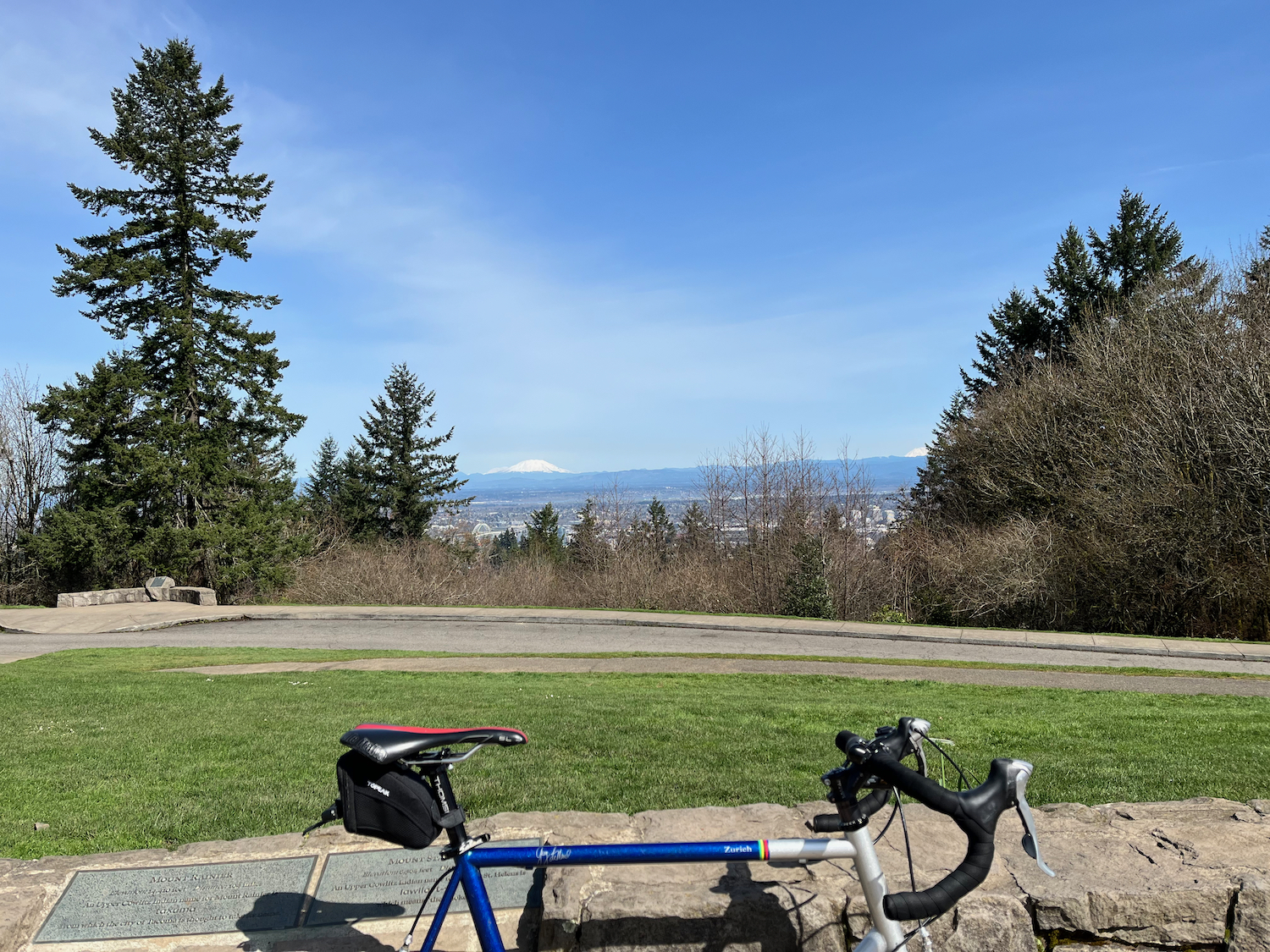Life is repetitive, painful, and dull. The day after day toil at the same job, whether that’s pushing the same button, monitoring the same machine, lifting the same pallets, fixing the same printer, managing the same behavior, grading the same papers, fixing the same mistakes. If progress exists, it is so incremental that sometimes we don’t even see it.
The repetitiveness is its own sort of pain. Pressure on the psyche to look for escape, to see something new in the fixed patterns. Life’s pain also comes from having a body. Stubbed toes, scraped knees, stumbles, bruises. Tripping over the step that’s a few millimeters lower or higher than we anticipate. The danger we put ourselves in hurtling along in a crouched position at 30 miles an hour, using only our soles and palms to stay on course. The tires sliding out from under us when we lean too much into a curve or hit the pothole we didn’t expect.
Life is dull. Dull because of the repetitiveness. Pain actually punctuates the repetition and breaks it up. But eventually we grow scars over the injuries, and the scar tissue is less sensitive than the original.
Cycling, if you’re doing it right, is also painful, repetitive, and dull. Painful, not because we fall, although we do. Not because the saddle is in the wrong position or the stem is too long or too short or the cleat sits at the wrong angle or the bar tape lost its padding. Those pains can be addressed. Painful because our ribcages prevent our lungs from taking in all the air they want. Painful because gravity tugs a little harder each time we want to go faster, each time we shift down. Painful because as we climb, there’s less air to fuel the legs. And so those legs do without.
Repetitive because that is the nature of the bicycle. It is based on a wheel, and all wheels rotate from beginning to end, over and over. The two wheels named as such are the ones wearing tires, the ones that come in contact with the road. The tarmac. The macadam. The pavé. The bricks. The cobbles. The gravel. The dirt. The grass. The wood planks. The potholes. The manhole covers. The painted lane stripes. The cement. The curb cuts. The leaves. The moss. The drainage grates. The railroad tracks. The hot tar. The car debris. The broken glass. The addicts’ needles. The weeds. The sand. The ash from last night’s campfire in the middle of the bike path. The melted asphalt. The puddles of unknown depth. The oil slick rain.
There are two other wheels on the bicycle as well. One is part of the rear wheel, so you may not think of it as a third. I’m thinking of the one with the cone of sprockets that begins at the hub and extends outward. Each cog in the cassette tapers, growing smaller in diameter until it reaches the frame’s chainstay. And the third, or fourth wheel depending on how you’re counting, is the chainring. The chainring is what allows our legs to move in a repetitive way. It cranks the knees. It’s how we scissor our legs back and forth. Right foot in front of the left, left foot in front of the right. The most repetitive dance. A motion not unlike the crawling or the walking that we first learned is a way to get around. A scissoring more elegant, more propulsive because of leveraging the technology of gear ratios. Wheels carry us farther with less effort. The motion is inherently repetitive. Our knees go up and down. Our feet go forward and back. Our wheels turn, top to bottom to top. The revolutions, the circular path. Anything that has a beginning must have an end, and everything that starts stops. Whatever expands contracts, and what moves forward must come back.
And cycling, if you’re doing it right, is dull. We grow accustomed to the challenge. Once we master the magical mystery of gyroscopic force and forward motion, we don’t question how the bicycle stays upright. We don’t know either. But, we don’t question. It just does as we expect. The bicycle goes where we point it, whether by turning our handlebars or loosening our hips and raising a knee. Riding a bicycle is dull in that you know what to expect. You turn the pedals, and you go.
Only what we allow ourselves to encounter on the ride, only what we do not plan for breaks up what is dull and makes each ride distinct from another. Only the unique configuration of the context and the circumstances of the ride make the ride its own. Which bike you choose that day, what time of day you set out, even if you travel the same route you always travel. The weather, whether it is raining or the sun is shining. The direction of the breeze. The angle of sun. The thickness of the clouds. The season of flowers. The generosity of traffic. The shades of green. The presence of goats. Only these interrupt the dullness. But it is precisely because of the repetitiveness, the dullness, and the painfulness of cycling that we are able to experience these small changes. We are able to experience what is new only when it stands out against the furniture of the world. We punish ourselves climbing up hills so that we may see the smallest differences in our selves and in the world, to see what has changed since the last ride.
Strava segment – Fairview to Wildwood Trail

